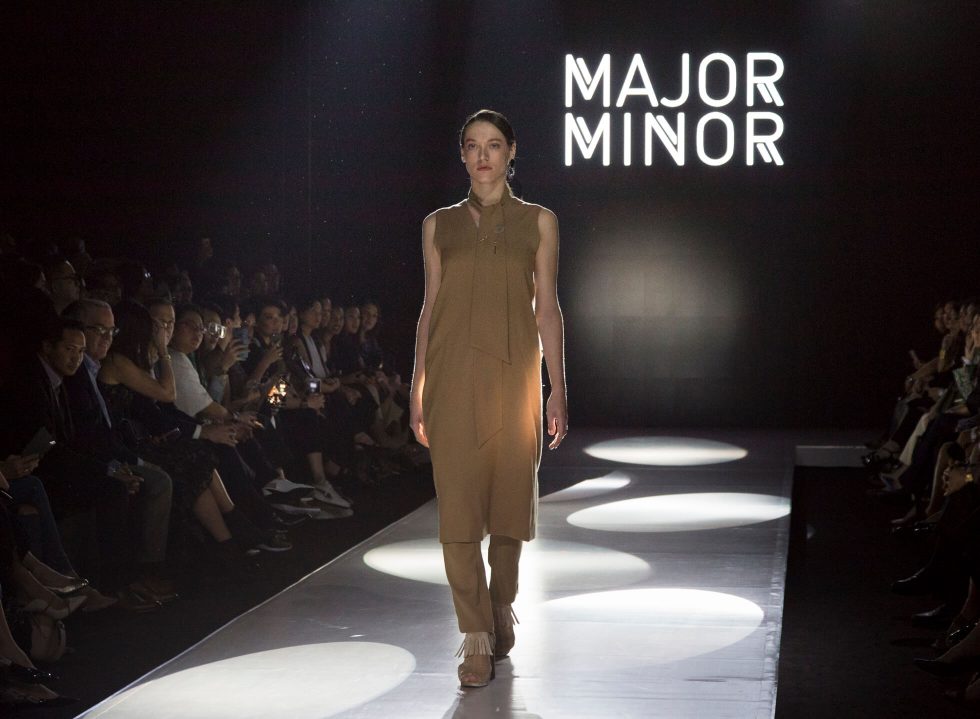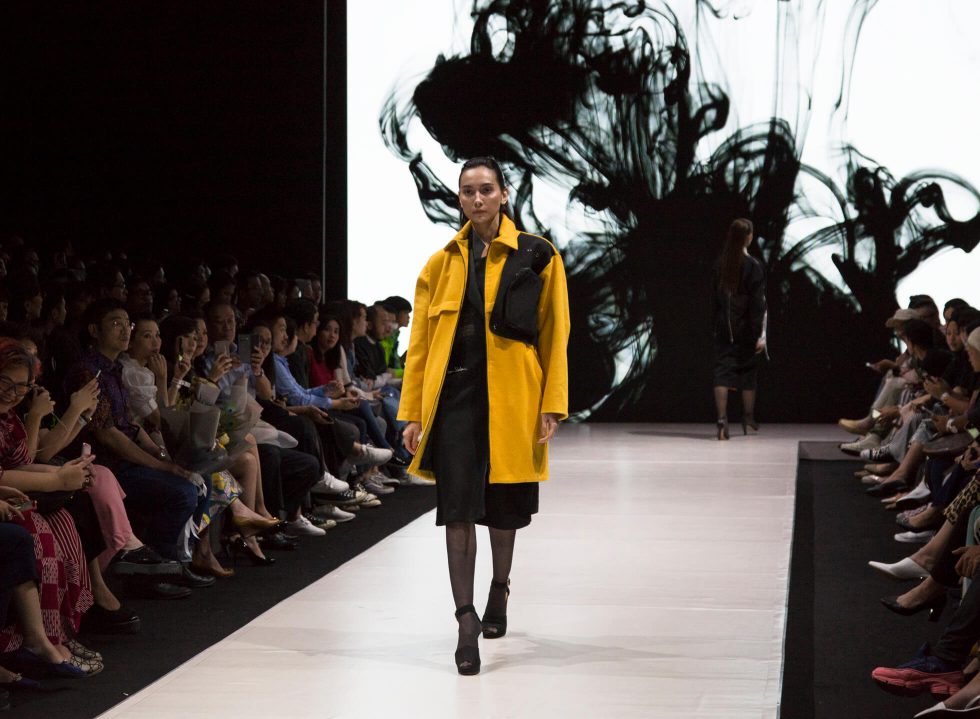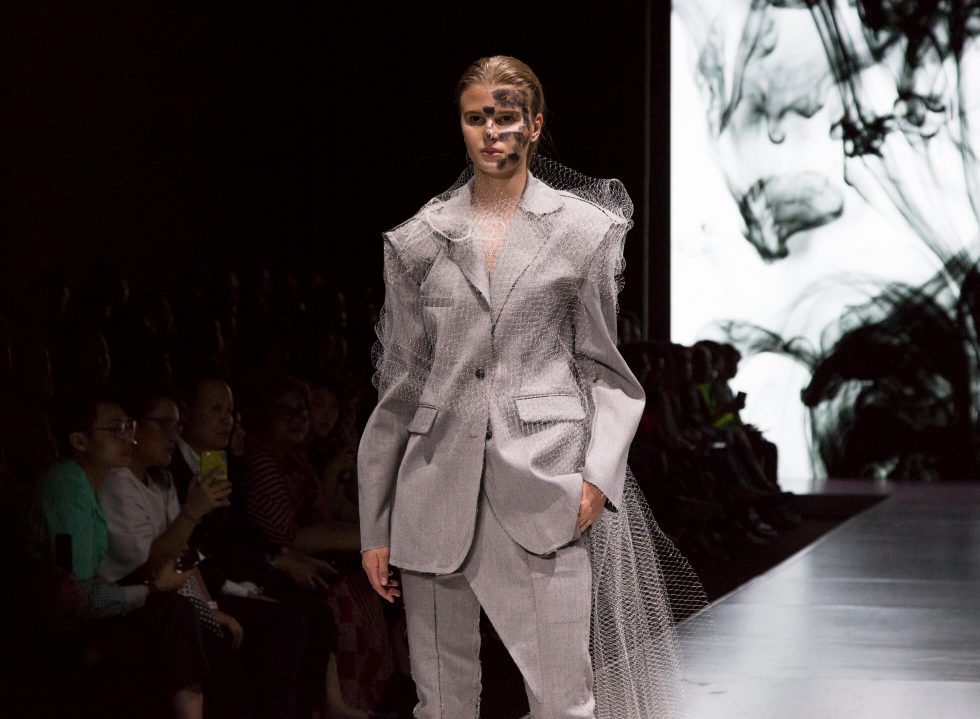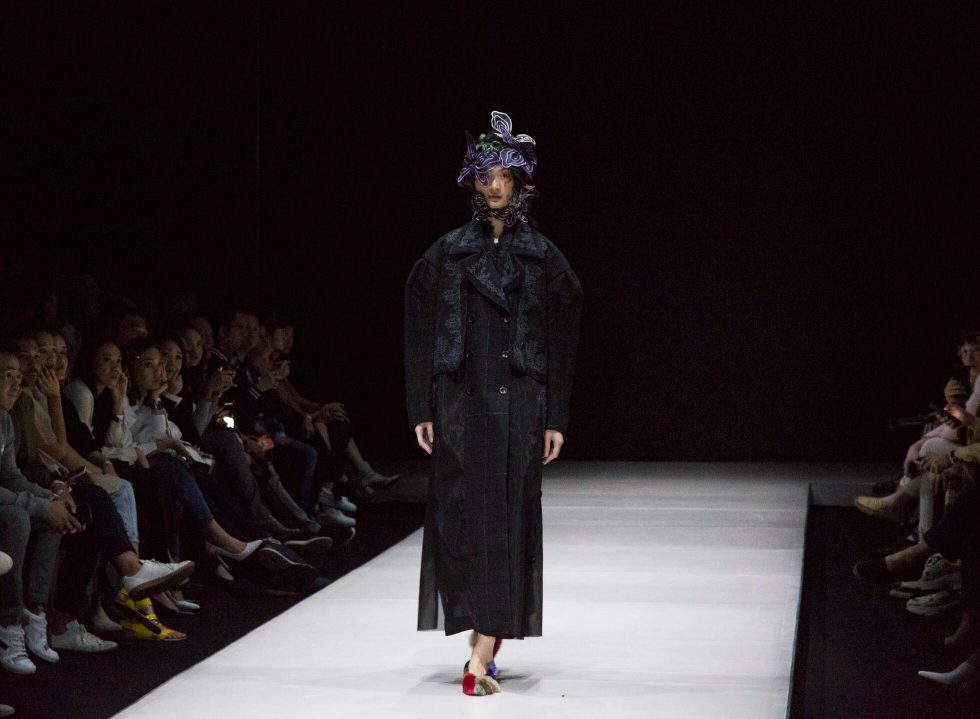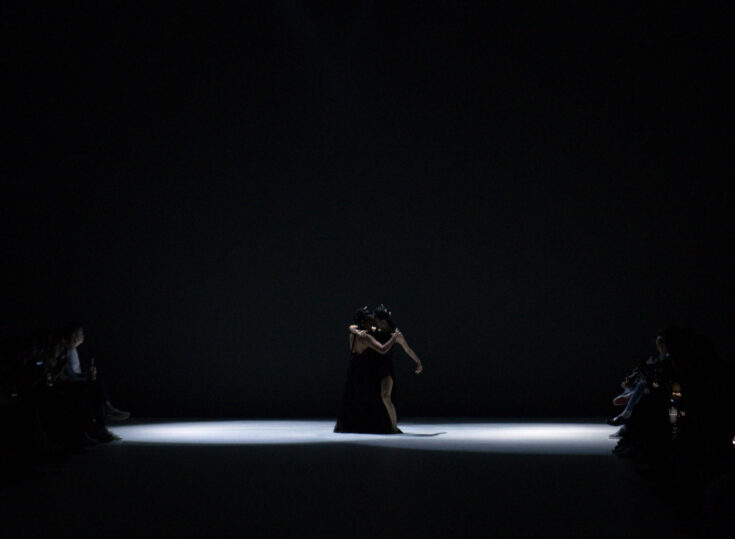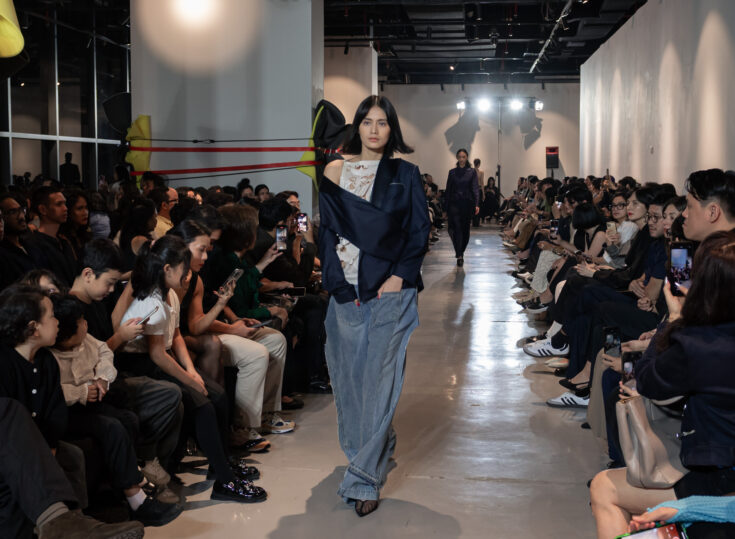For the past few years, Plaza Indonesia Fashion Week has slowly been showcasing more and more local talents in its schedule, even though these labels are not the permanent tenants of the luxury mall. And that’s obviously the right move because the local labels have gained an extra platform to communicate their vision in the flesh through the runway. Plus, who really cares about tenant showcase when the clothes have already been made public months ago?
Major Minor kicked off the last day of the schedule. There were plenty of separates that work really well for daywear, especially the sleeveless jacket with sharp lapels that extend all the way to the hem. In general, the proposed silhouette was long and lean, further emphasised through a belted waist and long wide-legged pants.
But the looks really came to life when they were worn by a handful of non-models. One of them, Widi Wardhana used to be a professional model and now the director of an investment holding company. These ladies walked with a sense of purpose and carried such strong presence that the rest of the models faded into oblivion as just another pretty face in the crowd.
The show would no doubt work better and more memorable with a higher ratio of real life women (non-models) to models. Still, it’s a comforting thought that the clothes actually work better on real people. Perhaps designer Ari Seputra, founder and creative director of the label, was contemplating on womanhood by virtue of his co-creative director, Inneke Margarethe who’s currently on maternity leave.
Sean Loh and Sheila Agatha of Sean Sheila delivered a solid collection that’s imbued with fresh energy. While the couple is still occupied with the efforts to highlight the increasing pollution that’s choking the ocean, this time round the execution wasn’t burdened by the concept.
Instead of relying on embroidery, which has been the label’s signature stamp, Sean and Sheila chose to focus on the tailoring and deconstruction. But looking at the way some of the clothes were made, as if pieces of pre-loved clothing were deliberately destroyed and stitched together afterwards, it’s also appropriate to call it reconstruction – the way that Frankenstein was built, if you will.
Their take on the utility jacket hits the sweet spot – roomy but nipped at the waist with oversized pockets. They also take it further by literally incorporating a giant pocket (in the size of a sling bag) onto the body of the jacket that brings to mind an overgrown tumour. It’s the perfect example on how to combine elegance with the current craze on streetwear for the female audience. Overall, Sean and Sheila managed to strike the right amount of balance on experimentation and wearability.
The overabundance of texture in the collection of TOTON was incredibly stimulating. Those who followed Toton Januar’s work closely for the past few seasons would notice that the designer is still employing similar codes, such as floral embroideries, pleated skirts and denim jackets. But what he presented was imbued with a new sense of perspective and direction that it felt new, while remaining comfortingly familiar.
Throughout the collection, the dramatic texture on ruffle gloves, hairy bags, giant spiky earrings and furry mules lead your gaze back to the details of the clothes. No doubt some of the fashion influencers present were already giddy with excitement, visualising themselves wearing the eye-catching accessories for their Instagram post.
Towards the end of the show, more and more models marched out covered in sheer veils. At first glance, it may seem like an interpretation on celebratory bridal dress. But as the show progressed, along with the unsettling undertone, it’s clear that things weren’t as cheery as it seems. Since Toton has always centred on fashioning a woman’s body in respectful manner, the veils could be (or should be) read as a symbol of grieve, especially in current climate where women’s bodies are increasingly policed and politicised. And the end of it is nowhere in sight.





